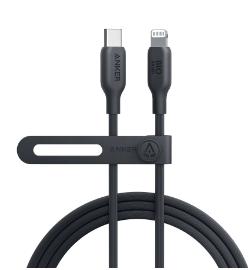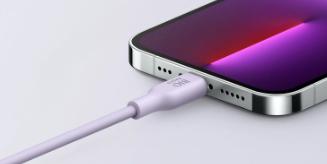Charger or Cable: Which Matters More for Fast Charging Your iPhone?
Fast charging has become a crucial feature for many iPhone users. In a world where we rely heavily on our smartphones for work, entertainment, and communication, the ability to power up our devices rapidly can make a significant difference. But when it comes to fast charging, there's often a debate about what matters more: the charger or the cable. In this article, we'll dissect the importance of both components in achieving fast charging speeds, offering insights into which one holds more weight in the charging process.
The Need for Speed: Fast Charging Explained
Fast charging is a technology that enables devices to recharge at a much higher rate than standard charging. It's a valuable feature for users who are constantly on the move, as it can provide a significant power boost in a short amount of time. But achieving fast charging isn't just about plugging your iPhone into any charger and cable; it requires the right combination of both elements.

The Charger's Role in Fast Charging
The charger, also known as the power adapter, is responsible for delivering the electrical current required to charge your iPhone. Its wattage rating plays a crucial role in fast charging. Here's what you need to know about the charger's significance in the process:
Wattage
The wattage rating of the charger is a key determinant of how quickly your iPhone will charge. Apple's standard charger provides 5 watts of power, but newer models support higher wattages. For fast charging, it's recommended to use an 18-watt (or higher) charger.
Quality and Efficiency
Not all chargers are created equal. Apple's official chargers are designed to be efficient and reliable. Using an inferior or counterfeit charger can lead to slower charging speeds and, in some cases, pose risks to your device.
USB Power Delivery (USB-PD)
USB-PD is a protocol that allows for higher power delivery via USB connections. For fast charging, your charger should support USB-PD, which is commonly found in modern chargers and power banks.
Multiple Ports
Chargers with multiple ports can distribute power across devices more efficiently. For example, a charger with USB-C and USB-A ports can fast charge an iPhone while charging another device simultaneously.
The Cable's Role in Fast Charging
While the charger provides the power, the cable is responsible for transferring that power from the charger to your iPhone. Here's why the cable is a crucial component:

USB-C to Lightning
To achieve fast charging, you must use a USB-C to Lightning cable. This cable is designed to handle higher wattages and faster data transfer rates. The standard USB-A to Lightning cable that comes with your iPhone isn't optimal for fast charging.
Cable Quality
Just like chargers, not all cables are of the same quality. A high-quality, MFi (Made for iPhone) certified USB-C to Lightning cable is essential for safe and efficient fast charging. Using a subpar cable can hinder the process.
Cable Length
The length of the cable can impact the charging speed. Longer cables can result in a slight reduction in charging speed due to increased resistance. For optimal fast charging, use a cable of recommended length.
Conclusion
When it comes to fast charging your iPhone, the charger and cable are equally important. Think of them as a dynamic duo working together to provide you with a quick power-up. That said, if you're looking to prioritize one over the other, it's generally recommended to invest in a high-quality, MFi certified usb-c to Lightning cable first. A top-notch cable ensures efficient power transfer and is a fundamental requirement for fast charging. Ultimately, both the charger and cable should be up to par for the best fast charging experience.